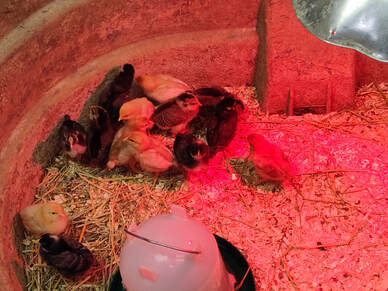 There can be many signs of Spring here in the Upper MidWest, and the Great North. One of them is snow. We have not had a typical Winter here at all. We have broken many records for warmth, and had very little snow. We did have rain around Christmas. No White Christmas here, but it was wet and cold! Now that Spring is here, so is Winter and snow! It feels like winter now with cold conditions and the sleet/rain/snow. This is not so unusual this time of year, it is strange after the 'non-Winter' we had, or not had? Late Snow is adjustment, or an improvise, especially when having animals on the ranch. This was a good winter to unroll hay out in the pastures for the animals to eat the hay. They actually are 'grazing' the hay. It is like having a 5 foot wide and 700 plus foot long feeder for the animals. The safest feeder I can find. The animals graze, and deposit the manure right out on the pasture. Those areas I feed this way always green up sooner. The first year I unrolled hay was on ground that was used for corn the previous growing season. When the weather warmed up there were areas you can see exactly where i unrolled the hay, it was thick, green, and lush. Some spots were thick with clover. The animals were fed outside with room, and sunshine, in turn they seeded, and fertilized for me! All in one pass with a lighter tractor and a simple bale unroller. Another sure, and very welcome sign of Spring is Chicks. We bought 14 soon to be egg layer chicks. We have several different breeds, which will eventually produce green/bluish, and brown eggs. So far the chicks are thriving. They are so entertaining to watch, and their growth is amazing after a week. They act like little hens already pecking at the hay I put in for them to scratch through (and our entertainment). If you follow me on Social Media you might have seen my live video of them. Sharing the fun! The Calendar says Spring, but outside Winter is still showing its Mighty Strength. When I heard the first Robin in February I was cautiously optimistic about an early Spring! One thing I have learned about life here on the ranch is Nature always wins! I try to find ways to work with it and not against it. The cows calving in May is one way to work with it and not be so stressed about late (normal) snow. Keep your Hindquarters to the Wind! Brian
0 Comments
I Made My First Podcast, Kinda.On my You Tube Channel I uploaded my first Podcast! Well, Kinda.
File this under, "Nothing is ever as easy as it seems." Here I thought it would be like making a video and uploading it. Wrong! That is what I ended up doing, but techincally I need to put into an "RSS FEED". I have seen this term before, but don't know much about it. I did some research, and I am here to tell you... I still don't know much about it. Long story short, it is really not a podcast, but I uploaded it for you to listen to. The subject is about the the Food Recalls, both Federal, and State. There are way more than recalls than I ever realized! You might be like me, and think "they probably won't affect me", especially considering we grow a decent portion of our own food here on the ranch! However, a recall affected me, more specifically my dog, Hondo. He is fine, but it was an eye opener to pay more attention to these recalls I receive by e-mail, anyone can sign up for them. Link to the Podcast is here: https://youtu.be/9z99P2SN7Ec Trails of Happiness! Brian Today is the first day I fed the cattle in a lot. That means for me I put two round bales in two separate feeders. This also means I put out some bedding in the shelter for the cattle. All this is on cement. I feel very fortunate to have the shelter and the cement. Right now under the snow, hay, manure, bedding etc the cement is not visible. It is is nice to have cement for when the weather is warmer and wet, it gives the cattle a good base to be on and is especially nice when it is time to clean out. Most importantly it keeps the manure and all the valuable nutrients in place to be composted and spread on the fields later in the Spring. How this works is I start with a base of anything rich in carbon. This might be leaves from the fall, wood chips, low quality hay, corn stalks, this list goes on. This gives the animals a softer place to lay, and material to soak up and keep manure, urine in place. It also offsets the foul odor. I never want to smell any foul odor around the animals and where they bed down and eat. The odor says you are out of balance. As they "use the facilities" so to speak I lay down more carbon on top to keep them dry and keep the odors away. This also starts the composting process. The compost process gives off heat (Think of in-floor radiant heat) for the animals, for free! The reason why today is significant is because this is the longest, by far, I have ever gone before feeding them in the lot. They still have access to the pasture, but they generally stay by the food source. How is this possible? By Round bale unrolling. I bought an unroller late last season after a lot of research. I have not looked back. In short I unroll the hay on a stretch of pasture for the cattle to eat and lay on much like they do from eating grass. This in turns gives me fertilization from the cattle spreading their urine and manure. I also get fertilization by any remaining hay left over. The most common question I see and hear is "what about waste?" It is a logical, good question. I have two answers to that. One, there is no such thing as waste if the animals push the remaining hay into the soil and or snow pack. It feeds the biology in the soil, Two, they eat the hay up so well and have much less competition for food. I get about the same amount of days feeding in a feeder as I do unrolling the hay. Generally when the animals are done eating all that is left is manure and urine spread across the pasture, saving me time and money in the Spring. The animals also love laying on the hay in the Sun. I have a video posted of unrolling bales for the horses and cattle recently. PS the reason I started feeding in the lot is because of the 40 mph winds expected the next few days. Most of the hay would stay in place but the only time I consider unrolling bales wasteful is if forty percent of the hay or more would end up on the neighbors. Just my way of trying to experiment and think outside the conventional box. Brian Desensitized or Tuned out?I see a lot of advertising about "Desensitizing Clinics". In a nutshell these are geared towards all kinds of plastic bottles, barrels, tarps and those pool floating noodles set up as like a big gate horse and rider walk through. I can see the attraction to these clinics it sounds like something useful to gain confidence and have some fun. Generally that is not the expression I see on these horses in the advertisements. I usually see a horse that looks tuned out and the life gone from the horse's eye.
It seems like a lot of things today are well intended, having a useful purpose but go so far beyond reason that at times does more harm than good. I like to use a flag when working with horses. A flag is basically like a fishing rod without the reel and eye holes with a plastic flag attached on the end. About 4' long. You can use it as an aid to get your horse to move, and to get your horse accustomed to scary things that sound and look strange. This is the beauty of it. It is so wonderfully simple of a concept. Just like my hands and legs and riding I don't want a horse afraid of either but I want the horse to respond to my hands and or legs when asked to do something. The concept is simple but applying the principles, and coordination takes lots of practice. My concern with the Desensitizing is the extreme people go. So much so that it can be forgotten that a horse has emotions, the ability to think and respond to what going on around them in a fast amount of time that can keep both horse and rider out of trouble This was the case today when I got a call saying a neighbor had a couple of calves get out that were fresh of the truck from Montana. When I got there with my horse Copper there were people in trucks, there were people on 4 wheelers and they had been trying to get these bovines in for several hours. It was a cold, windy day that felt about 12 degrees. There was a freshly dug up corn field bordered by a hay field. Copper responded nicely to trot quickly up a unfamiliar steep field that looked like perfect footing. I was wrong. When we got near the top of the hill my focus was on the two calves and where they might go, as I did Copper quickly changed his pace and veered. I was thankful he did. There were a few large gopher holes he avoided. Gopher holes are the perfect size to get a horse's foot trapped in causing possible great harm to horse and rider. This reminded me of the Spring of 2016 when I was riding Sawyer checking fence, and cattle. Like Copper we were clipping along at a nice brisk trot in some tall grass when he suddenly stopped in his tracks. I thought for a moment about what happened, when I realized why he did so abruptly, but with obvious reason to. There lay a young fawn directly in our path. It was really hard to see. Deer will do this on purpose. While mom goes off and forages she leaves the fawn so that it does not bring predators near her for an easy meal. I was thankful I was on Sawyer and not a four wheeler. I am very thankful I let my horses respond to what is around them while having control. I work hard to get my horses so they are not reactive and unbothered by things like ropes, chaps, flags, tarps, water, cattle, cars, etc etc. I think it is important not to kill the side of the horse that can respond, think, and save themselves, saving me in the process of it. Balance. I would think a good horsemanship clinic would include ways to get a horse used to objects, but it would be better to teach people how to control the feet and not see how many scary objects we can pile on a horse and drag to prove just how "desensitized" They are. Or is it tuned out? PS Copper helped me get a calf roped in that freshly churned corn field. He had to be real aware of so many things at once to get that job done. Mission accomplished. The pictures below are from a recent ride on my horse "Copper"
Copper is an 8 year old AQHA gelding I have owned since he was 2. Even at 2 years old Copper was a taller, big made horse. Today he is 15.2 hands and weighs around 1200 lbs. He is really fun to ride. I like a bigger horse for myself roping and I also like a horse that can be nimble, and quick on their feet. I feel Copper meets all those criteria. The summer I bought him I was healing from a little horse accident I had during late Spring. I felt good enough to start working with him late summer. I know right away he was good to be quite a bit of work. He was friendly enough, but very suspicious of most things I did and was very reactive to anything he thought was a threat. It seemed he thought most anything I did was a threat. He was also at a point where I felt like we ended our session on a good note, but when I started the next day it was like he forgot everything we did the previous day. That was OK with me, I have seen many horses like this before and knew I just had to remain consistent and reward any try he was giving me. I kept up with this quite a bit. I was healed up enough to start saddling him late Fall. That is when I found out how athletic this big horse was. I also learned how reactive he was. I worked at this for a while, after all this was not the first time I worked with a horse like this. However, I was started to feel like I needed some help. As luck would have it a Bob King Horsemanship clinic was coming up soon at my friend Tom Hone's place nearby. I signed up. Bob helped me tremendously. I learned many tools with horses to put in my tool box. I think I was up on Copper for the first time on day 2. Everything was going great, until later in my ride we went for a unexpected victory ride around the indoor. It was not the smoothest ride, and I was amazed how fast you can clear an arena full of people (sorry about that fellow riders). Bob quickly helped me through our little rodeo ride and Copper actually felt better after that as he was actually a little sticky not moving out before that. For the next year I worked with Copper riding and roping. I felt things were going well, he still was not the horse I started with the from the previous ride, but we were getting better. The next year Bob came he offered a real Ranch Roping Clinic. I jumped at the chance as that kind of roping really intrigued me. I loaded some cattle and Copper and away we went. I was also looking forward to show everyone the hard work I had put into Copper. Things were going fine, I was learning a lot of new techniques with the roping and the horses. We were toward the middle of the day. That's when I noticed a little change to Copper. I roped a steer and kicked up Copper to track and that is when he decided he had enough. If you ride horses long enough, especially young ones, you probably will fall off in front of people. That is what happened. It is very humbling. I looked at this as a learning opportunity (after I took a big gulp to swallow my pride) Bob showed me some things and talked about things I may have been missing in doing with Copper. Those things still sit with me today. I am grateful for those days working Bob. Fast forward to today years later. Copper is really fun to ride. He is getting to be a really solid, trustworthy horse. We still work on things but he has come a long way and taught me so much. One of those things is the "Do Less" and "Just Wait" concepts. It used to be I had an agenda I must get done on a horse. Copper taught me that horses have feelings and emotions too, and maybe we should check in with our horses to see where they are at today. I always knew and believed in this, but I did not realize to what extent. Now for the last year and a half or so with Copper I get on and just wait. I have realized he starts yawning almost immediately after I get on. Not just a little, but there are times he does it for a minute or two. I did not think a whole lot of it at first, but as time went on I realized how much better he felt after. I can feel it from the tip of his rather large ears to the bottom of his tail, and most importantly all the way down to his feet I read articles of horse massage therapist talking about how important yawning is and it is a sign you are doing something right. I have to say I agree with a lot of it. It is pretty hard to be afraid and tense if you are yawning. It is so important in horses to have a soft jaw and a flexible poll. I feel that when he yawns. There are times even during the middle of a ride he stretches his neck out and yawns. I let him too. Copper has helped me think about not always having an agenda, to improvise and be flexible. Goals are important but I have found I am better with a horse if I am listening and I can adapt. Getting on my horses and just being quiet when I can helps me not to have such and ego. It helps me listen to where they are at. Would that be nice if we as humans can do this? Do not always react, just wait and listen, if even for a moment. I strive for that. I have a long way to go. BW |
Archives
March 2024
Categories |

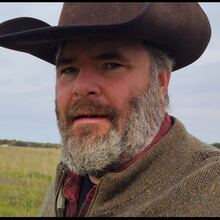

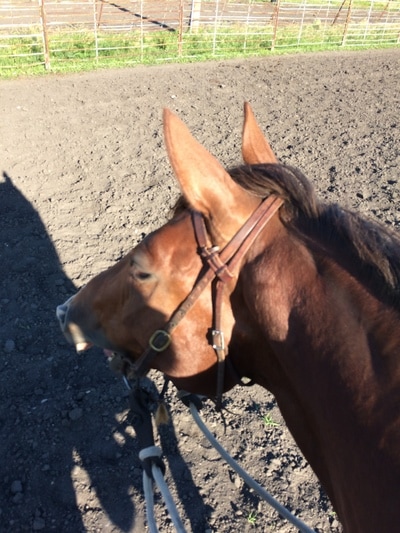
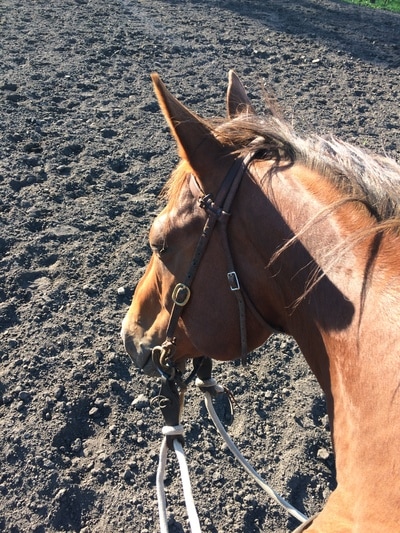
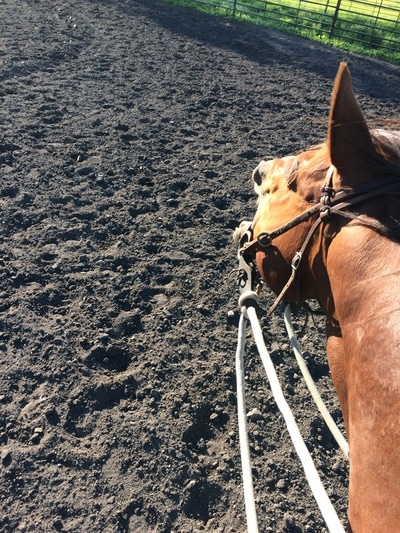



 RSS Feed
RSS Feed